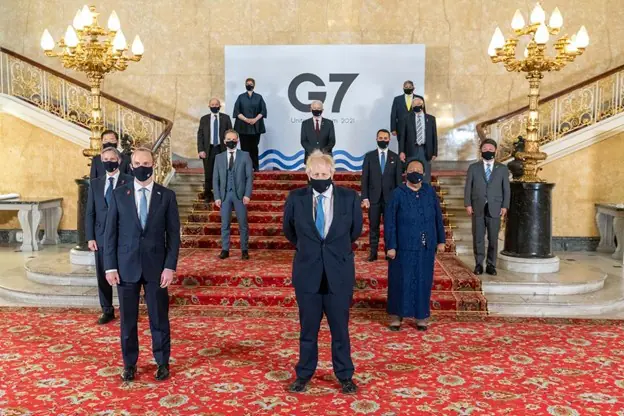Let’s get something out of the way: the G7 finance meeting in Banff this week is not going to solve the Trump tariff problem.
In fact, based on early signs, the world’s top economies are doing everything they can to talk about everything but tariffs, climate change, AI, Ukraine, and IMF support… You name it.
But the hard truth is that until the G7 confronts U.S. trade coercion head-on, they’re negotiating in the shadow of a global economic elephant.
Trump’s Tariffs Are Not Just “America’s Business”
The idea that tariffs are a bilateral U.S. issue is outdated. When you have Japan, Germany, France, Italy, the UK, and even host Canada all grappling with duties ranging from 10% to 25%, this is a global economic blockade in all but name.
And make no mistake: these are not legacy tariffs. These are freshly reimposed, Trump-era “reciprocal” duties threatening to double in July. That’s not a trade policy, it is economic gunboat diplomacy.
So while G7 ministers may be trying to strike a polite tone, investors and businesses watching from the sidelines are asking tougher questions. For starters, what’s the cost of inaction? Is multilateralism dead? Can the G7 still function if its largest economy is actively targeting its allies?
The “Moderate” in a Hardline Cabinet
U.S. Treasury Secretary Scott Bessent is being cast as the reasonable adult in the Trump room. And to his credit, he’s kept the U.S. engaged in multilateral discussions, defended IMF and World Bank funding, and even left the door open for trade deals.
But let’s not sugarcoat it: Bessent is also the enforcer of Trump’s tariff threats. He’s the one warning Japan, and by extension the rest of the G7, that if you don’t “negotiate in good faith,” you’ll get slapped with 24% tariffs.
You can’t be the diplomat and the muscle at the same time without sending mixed signals. And that’s what’s happening now.
While G7 ministers fuss over their draft communique language, trying to signal unity without offending Washington, businesses are freezing plans, delaying shipments, and rethinking expansion.
Tariffs aren’t just a headline issue. They ripple through supply chains, pricing models, and long-term investment strategies.
Consider this: The U.S. Chamber of Commerce’s Suzanne Clark admitted she couldn’t predict the future anymore. If the head of America’s largest business lobby is flying blind, what does that say to the rest of the world?
The G7 Needs to Decide What It Stands For
Here’s what’s really at stake in Banff: the credibility of the G7 as a force for open markets, democracy, and coordinated economic policy.
You can’t stand shoulder-to-shoulder on Ukraine, AI, and IMF reform while letting one member hammer the rest with unilateral tariffs. It is inconsistent and it is cowardly.
At some point, the G7 has to stop tiptoeing around the U.S. and start asking: what does economic leadership look like in a post-globalization world?
Either Call It Out or Get Out of the Way
If G7 finance leaders want to be taken seriously, they need to stop playing defense. The days of soft, watered-down communiques are over.
Call out coercive trade practices, whether they come from Beijing or Washington.
Stand up for free markets with the same intensity you show on Ukraine. Put forward a joint tariff response strategy, or at least a framework for economic resilience.
Because if the G7 doesn’t stand up to its members, what hope does it have of influencing anyone else?



